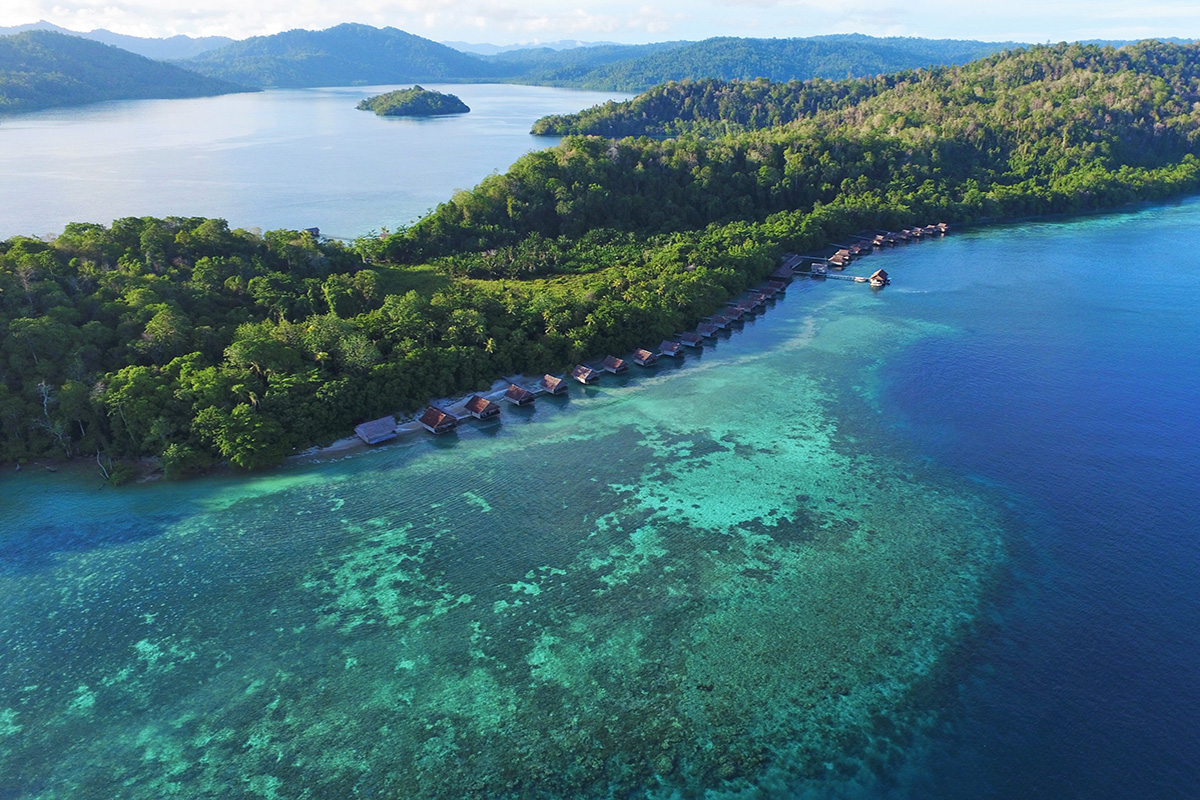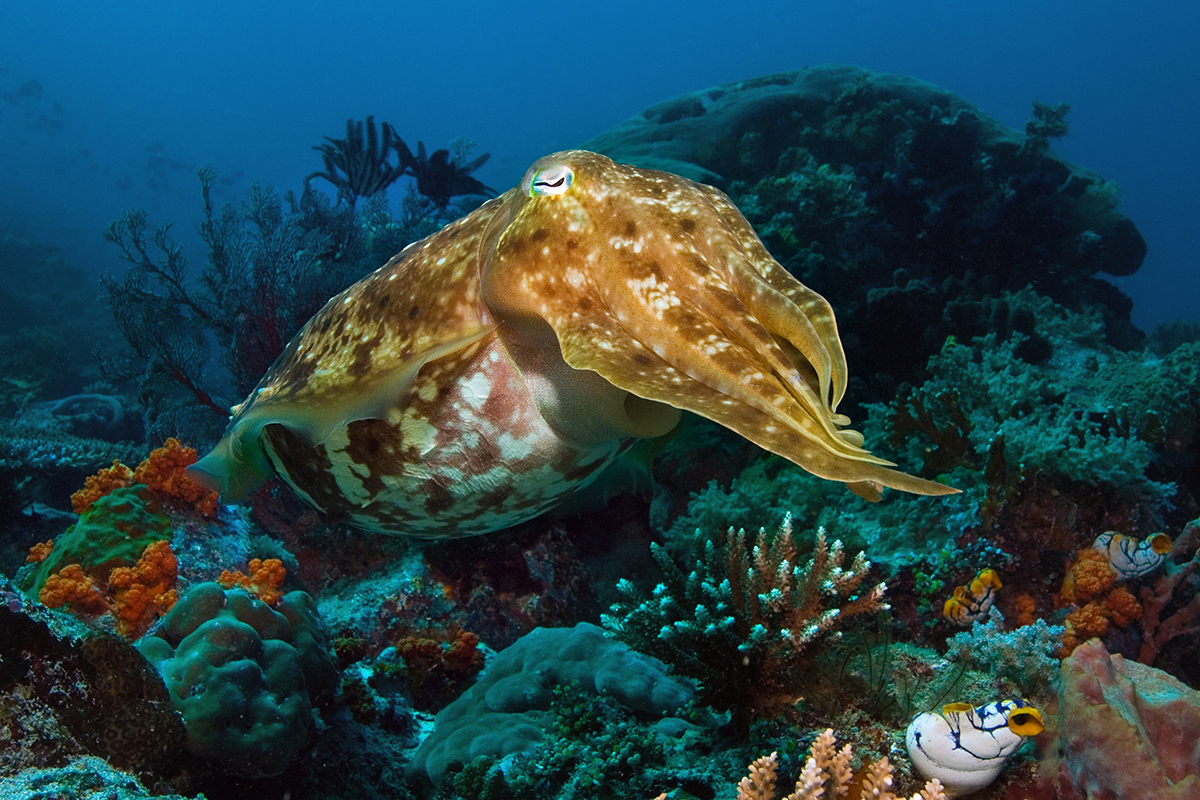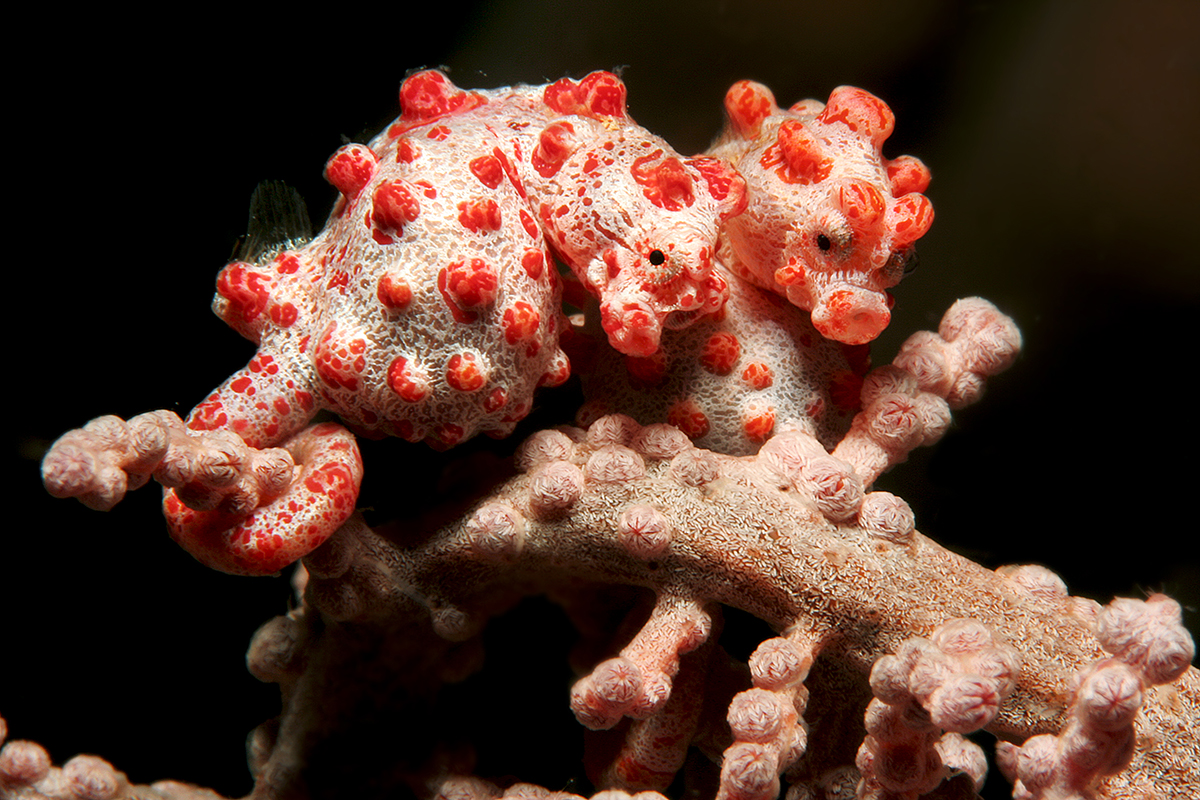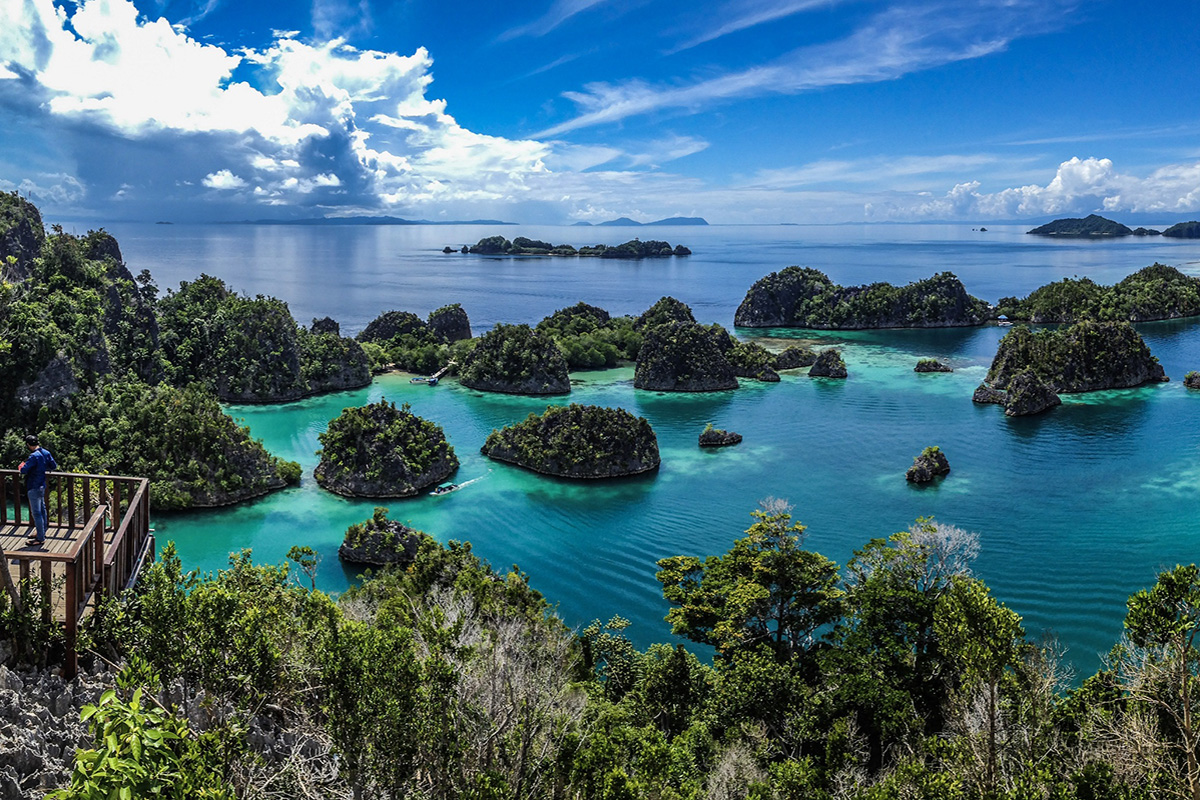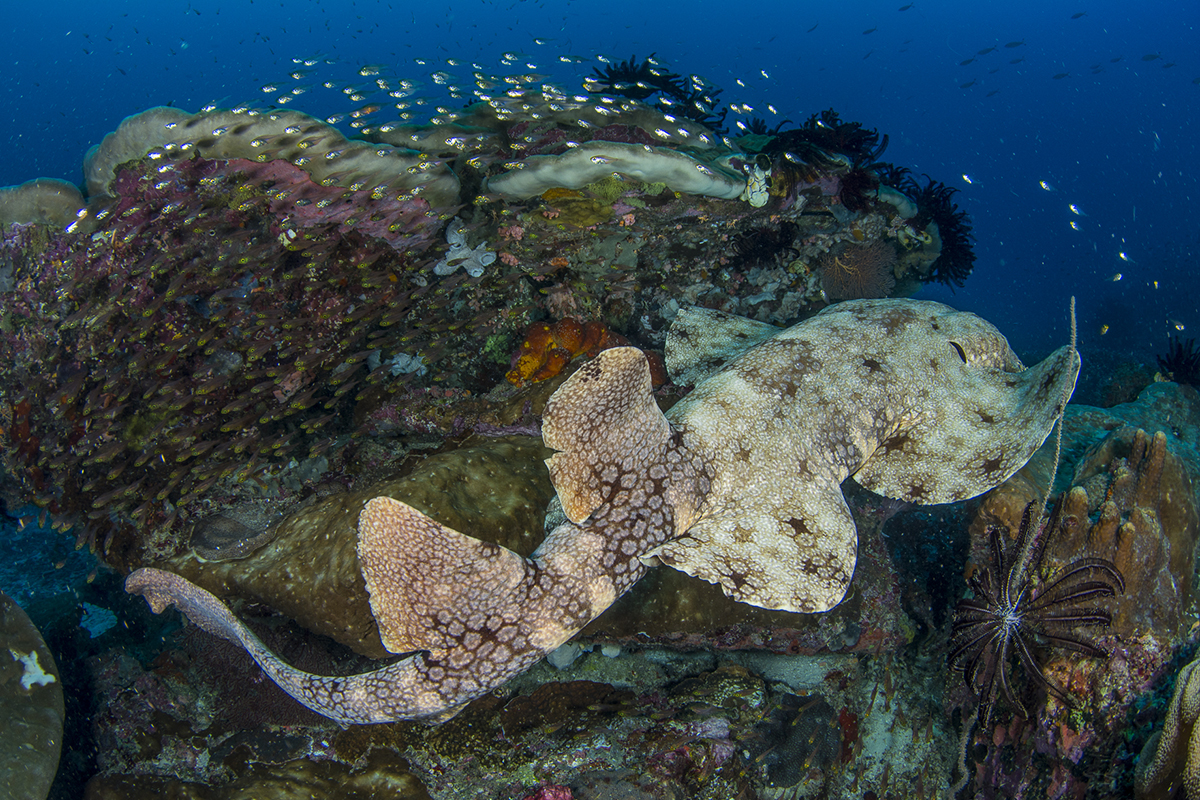A Guide to the 3 Areas of Raja Ampat Diving: North, Central and South
When researching Raja Ampat you may come across some people describing the region into three distinct areas – North, Central and South Raja Ampat. It is quite common for trip providers to offer diving tours to one or two of the areas rather than a trip to the whole of Raja Ampat. Read on to find out what sets the different areas of Raja Ampat apart from each other.
North Raja Ampat
North Raja Ampat encompasses northwest Waigeo Island, Kawe Island and the Wayag Islands. This is one of the more difficult areas of Raja Ampat to reach but it does have some very beautiful dive sites. If you are visiting this region to dive you will probably be heading to Sel Pel Bay.
This bay is famous for its beautiful sloping reefs, home to a huge selection of macro critters. You are likely to find pipefish, cuttlefish, sailor shrimp, and plenty of strange and beautiful nudibranchs here. Underwater photographers will have plenty of subjects and those with a particularly sharp eye may see pygmy sea horses and sea dragons.
Heading further north Kawe Island is an uninhabited island sitting right across the Equator. This isn’t the easiest dive to get to but if you are looking for manta rays, it could be worth the trip. Eagle Rock is your best bet for rays and wobbegong sharks are often spotted here as well.
The Wayag Islands at the northernmost point of the archipelago are generally only visited by liveaboards but can also be reached on a day trip. These islands are classified as a national park thanks to their iconic conical shape towering out of sparkling blue water.
These islands are famous for the sheer number of reef sharks that reside here. Around the Wayag Ranger Station jetty black tips circle in the shallows feeding on the many small fish that school here. Wading into the water and snorkeling in the shallows you can get up close and personal with them.
Central Raja Ampat
Most divers will be heading to the central part of Raja Ampat between the main islands of Waigeo and Batanta for most of their stay. This is the easiest region to get to and there are countless dive sites to explore. Papua Paradise Eco Resort is located in this area, making it the perfect base from which to enjoy Central Raja Amapt.
The Dampier Strait runs between Waigeo and Batanta Islands making for some of the most nutrient rich waters in the world. The reefs here are bursting with sweetlips, trevally, bump head parrotfish, barracuda, reef sharks, and manta rays. You may also spot whales and dolphins passing through. Drift diving in the Dampier Strait is as good as it gets anywhere in the world. The biodiversity you will take in as you drift is absolutely astounding to even the most experienced diver.
Some of the most famous dive sites in this area are around the Fam Islands. These are not only stunning to see as the boat motors towards them but underwater a treasure trove of marine life awaits you as well. Hard corals galore, reef fish of every size and colour, and sometimes even a tassled wobbegong shark or two.
Just to the south of Papua Paradise Eco Resort is Batanta Island. This area is well known for muck diving. Sloping sandy bays filled with coral rubble are home to innumerable critters. You might need a sharp eye to spot some of them but for macro photographers this is heaven.
South Raja Ampat
The south of Raja Ampat around Misool Island is the least visited area of the archipelago. Because of the remote location it is most often divers on liveaboards that get the chance to dive here. However, it is becoming more popular and new dive sites are constantly being discovered.
The dives around Misool Island are bliss for divers that search out large pelagics, including sharks, barracuda, snapper, and grouper. There are also a number of manta ray cleaning stations in the area.
However, most divers come here for the sharks. There is an abundance of reef sharks but also hammerheads and wobbegongs for a real thrill. Additionally, whale sharks are often spotted in the area.
Now you know a little more about the 3 diving areas of Raja Ampat. Which part would you plan to go to, or maybe you are dying to visit all three? We’d love to hear about where you would plan to go, so leave us a comment in the box below!

